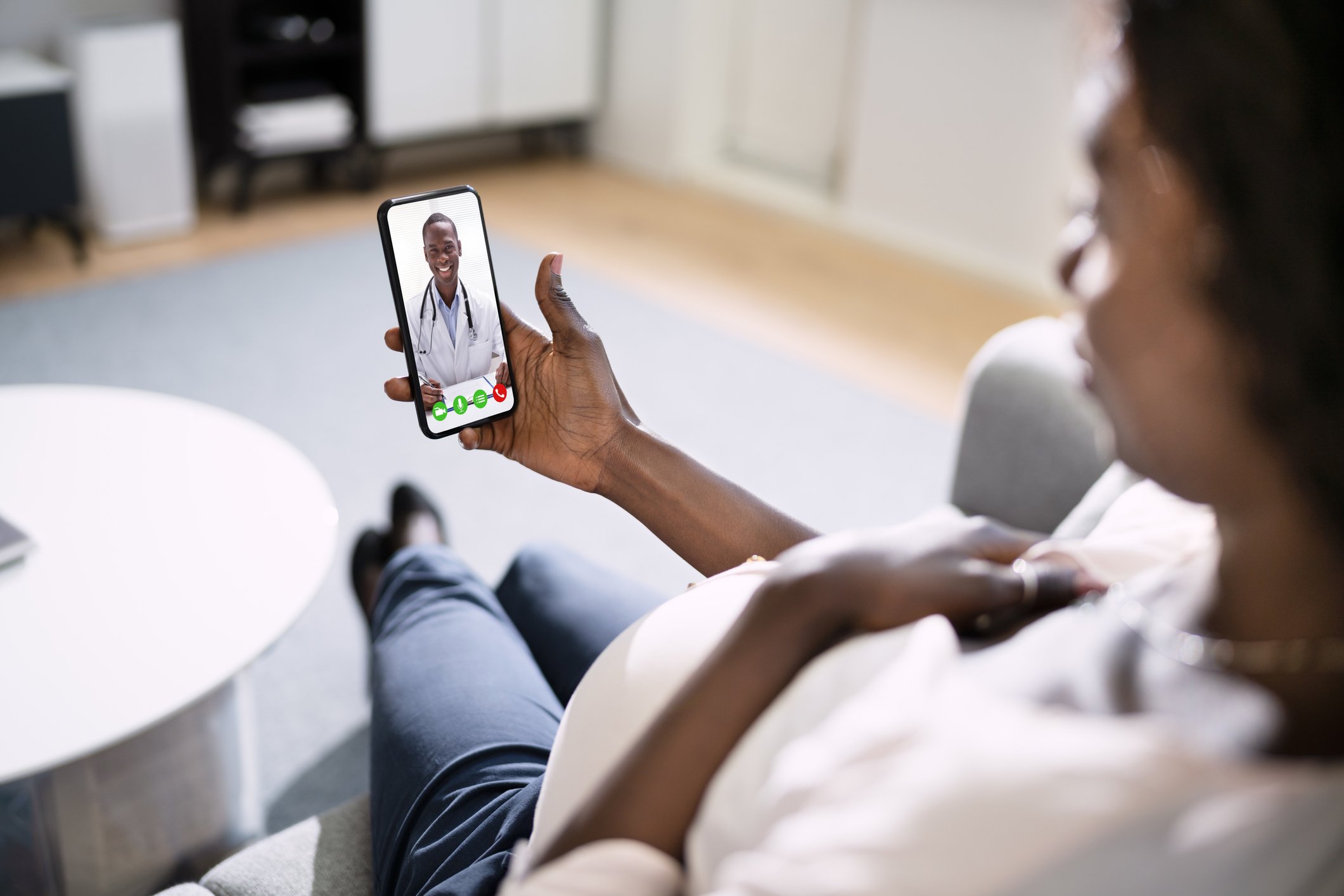
Frequently Asked Questions About Telehealth
“Telehealth” is a broad term that covers the use of phone and internet technologies to deliver healthcare. It can include virtual healthcare visits, remote monitoring of heart rate, blood pressure, or blood glucose values, and providing health education over the Internet. Although telehealth has been around for a while, it has become more common since the COVID-19 pandemic. Telehealth allows you to receive the same quality of care and attention from your healthcare team without meeting in person.
-
It maximizes your contact with your healthcare team and improves access to high-quality care.
It’s convenient. You don’t have to change your schedule or travel to your healthcare professional’s office.
It’s quick and efficient. Having a reduced wait time means you’re often done in less time than an in-person visit.
It’s private. You can speak with your healthcare professional in a location that feels comfortable to you, such as your home, office, work, school, and even your car. If you’d like, you can have more than one person accompany you for a telehealth visit.
-
Yes – telehealth is often combined with in-person care. You may have all telehealth visits for the first few weeks of pregnancy and all in-person visits later in pregnancy, or you may go back and forth between telehealth and in-person visits.
Telehealth visits can include diabetes care, genetic counseling, mental health screening, and health education and lifestyle counseling.
Telehealth appointments are just as important as in-person appointments; they are part of the “whole package” of healthcare.
Electronic healthcare portals are often part of the telehealth experience. They also provide a convenient way to communicate with your healthcare team.
-
Before the Call
You should receive instructions beforehand about how to connect to your visit.
Make sure you download any links that are sent to you to connect to the telehealth appointment.
Complete any necessary patient intake questionnaires before your visit to maximize your time with your healthcare professional.
Ensure that your internet connection or cellular service, monitor, and camera are working.
Some offices allow you to practice logging in beforehand with a staff member — just ask.
Make a list of your medications or check your medication list on the healthcare portal before your visit to make sure it’s up to date.
Choose a quiet, private location to have your telehealth visit. Like at an in-person visit, you should try to have as few distractions as possible during the appointment.
Prepare questions that you want to ask your healthcare professional.
If you have been checking your blood pressure, weight, or blood sugar levels at home, have those results ready to share with your healthcare professional.
Think about asking someone to be on the call with you to take notes.
Have the office phone number available in case you are cut off and need to reconnect.
If you prefer speaking to your healthcare professional in a language other than English, ask in advance for an interpreter in the language you want.
During the Call
It’s important to be on time for your appointment.
Try not to “multitask”— this is your time with your healthcare professional.
Make sure all of your questions are answered.
Jot down answers to your prepared questions or have someone else take notes.
Ask about the next steps.
Make sure you know whom to call or where to go to make any follow-up appointments. Remember that you are not in the doctor’s office and won’t be “stopping by” the receptionist’s desk to make a follow-up appointment.
After the call
Take advantage of your healthcare professional’s electronic portal if they have one. Use it for messaging, prescriptions, and scheduling follow-up visits. You may need to ask for a code or other sign-up link from the office.
Let the office staff know if you had any problems connecting during the visit. They need to hear about issues so that they can correct them.
You may be asked to complete a patient satisfaction survey following your telehealth visit to provide feedback about your experiences.
-
In most cases, your telehealth visit will be covered by your insurance.
Some insurance companies cover video telehealth visits only, while others may cover both video and telephone visits. Before your planned telehealth visit, check with your insurance company to find out if it will be covered.
Quick Facts
Telehealth allows you to use your phone, computer, and the Internet to access healthcare services like virtual visits and remote monitoring of vital signs.
Telehealth allows you to have increased contact with healthcare teams and improves access to high-quality care without the need to travel.
Telehealth sessions can be held in any private and comfortable location, such as your home or office, and can include others if desired.
Visits are often quicker than in-person appointments due to reduced wait times.
Telehealth is typically integrated with in-person care, providing a comprehensive approach to healthcare.
Before a telehealth visit, ensure your technology works, complete necessary forms, and prepare any questions you might have.
Most insurance plans cover telehealth visits, but coverage specifics can vary and may change over time. Be sure to check with your insurance company before your planned telehealth visit.
Last Updated: August 2024
